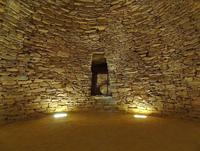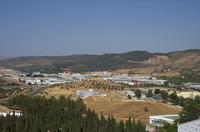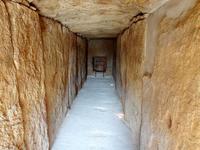You are in: Europe -> Spain -> Antequera Dolmens Site , and traditional search or Image Gallery will yield results of this site only
Antequera Dolmens Site
| Site number: | 1501 |
|
| Type of site: | Cultural | |
| Date: | Neolithic and Bronze Age | |
| Date of Inscription: | 2016 | |
| Location: | Europe, Spain, Andalusia | |
Up to 75 images are shown here. Click on each for more details or on Image Gallery for more images.
| Description: | Located at the heart of Andalusia in southern Spain, the site comprises three megalithic monuments: the Menga and Viera dolmens and the Tholos of El Romeral, and two natural monuments: the Peńa de los Enamorados and El Torcal mountainous formations, which are landmarks within the property. Built during the Neolithic and Bronze Age out of large stone blocks, these monuments form chambers with lintelled roofs or false cupolas. These three tombs, buried beneath their original earth tumuli, are one of the most remarkable architectural works of European prehistory and one of the most important examples of European Megalithism. --WHMNet's description is from WHC Site, where additional information is available. | |
| The Antequera Dolmens Site is a cultural heritage in series comprises by three cultural monuments (Dolmen of Menga, Dolmen of Viera and Beehive tomb of El Romeral) and two natural monuments (Peña de los Enamorados and El Torcal) existing in the city of Antequera, in Andalusia, Spain. The cultural institution responsible for its protection is the Archaeological complex Dolmens of Antequera. It has been declared a World Heritage Site in 2016… The Dolmen of Menga represents a unique masterpiece of lintel Megalithic architecture (Atlantic tradition), based in orthostates and blankets, unique for its enormous dimensions that lead to the limit constructive the typology of corridor sepulcher, incorporating an unprecedented solution of intermediate pillars; likewise, the Beehive tomb of El Romeral complements the catalog of megalithic constructions with a vaulted solution by rows based in masonry (Mediterranean tradition). --Wikipedia. Text is available under the Creative Commons Attribution-ShareAlike License. | ||
| Source: | http://whc.unesco.org/en/list/1501 | |
| Source2: | Wikipedia (http://wikipedia.com) | |
| Reference: | 1. UNESCO World Heritage Center (http://whc.unesco.org/en/list/1501). 2. Wikipedia. | |







